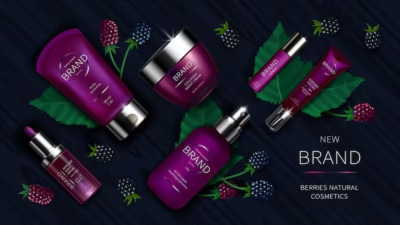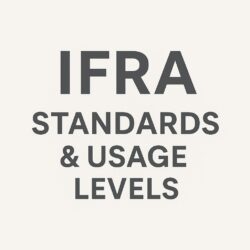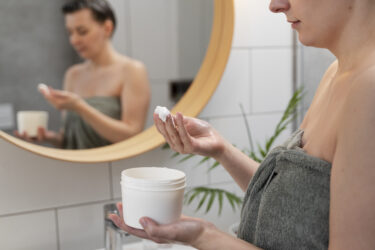Cosmetics Packaging and Labeling:
The cosmetics industry is an incredible world of colors, textures, and innovation. But behind every luxurious serum or vibrant lipstick lies a critical element that can make or break your brand: packaging and labeling. Beyond aesthetics, your product’s packaging and labels are legal documents that communicate safety, quality, and transparency to consumers and regulators. In this comprehensive guide, we’ll explore FDA requirements, design strategies, and common mistakes to help you create compliant, captivating cosmetics that stand out on shelves.

Why Cosmetics Packaging and Labeling Are the Backbone of Brand
Imagine walking down a beauty aisle. What catches your eye first? The sparkling bottle, the minimalist design, or the bold claims on the label? Packaging and labeling do more than just house your product—they:
- Build Trust: Clear ingredient lists and safety warnings reassure customers.
- Ensure Legal Compliance: Avoid FDA warnings, recalls, or fines.
- Drive Purchases: 72% of consumers say packaging design influences buying decisions (Source: Dotcom Distribution).
- Support Sustainability: Eco-friendly materials attract environmentally conscious buyers.
Let’s dive into the essentials of creating packaging and labels that are both legally sound and market-ready.
FDA Cosmetics Packaging and Labeling:
The FDA regulates cosmetics under the Federal Food, Drug, and Cosmetic Act (FD&C Act) and the Fair Packaging and Labeling Act (FPLA). These laws ensure that cosmetic products are truthfully labeled, safe for consumers, and not misleading in their claims.
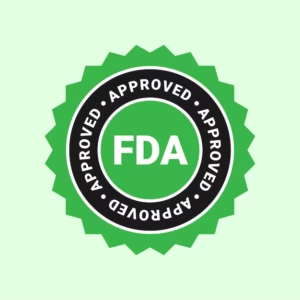
Mandatory Label Information
Every cosmetic label must include five essential elements to comply with FDA regulations:
- Product Identity: Clearly state what the product is and its intended purpose (e.g., “Hydrating Night Cream” for moisturizing the skin).
- Net Quantity: Display the amount of product in ounces/grams or fluid ounces/milliliters, ensuring clarity for consumers.
- Manufacturer Details: Provide the name and address of the company responsible for making or distributing the product.
- Ingredient List: List all ingredients using their INCI (International Nomenclature of Cosmetic Ingredients) names in descending order of concentration.
- Warnings: Include any necessary safety statements, such as “For external use only” or “Avoid contact with eyes,” when applicable.
Principal Display Panel (PDP) Rules
The PDP is the front-facing section of the label that consumers see first, making compliance essential:
- Product Identity and Net Quantity must be prominently displayed to inform buyers at a glance.
- Font size must be at least 1/16 inch tall on small packages to ensure legibility per FDA regulations.
- Avoid overly decorative fonts that may reduce readability and make essential details hard to decipher.
Information Panel (IP) Essentials
The information panel, typically on the back or side of the packaging, should include the following:
- Manufacturer’s full name and address for consumer inquiries and regulatory compliance.
- A complete ingredient list using standardized INCI names to ensure consistency and transparency.
- Directions for use, such as “Apply to clean skin twice daily for best results,” providing clear usage guidance.
Ingredient Declaration Best Practices
Accurate ingredient labeling is crucial for compliance and consumer trust—follow these best practices to ensure clarity, transparency, and regulatory adherence.
- Use INCI Names: Standardized names, such as “Tocopherol” instead of “Vitamin E,” are required for uniformity.
- Order Matters: Ingredients must be listed from the highest to the lowest concentration, ensuring transparency.
- Fragrance Exceptions: Companies can list “fragrance” or “flavor” without revealing proprietary blend details.
Allergen Labeling: U.S. vs. Global Standards
Allergen labeling requirements vary across regions, impacting how brands disclose potential allergens to consumers. Here’s how different regulatory bodies handle allergen labeling:
- FDA (U.S.): Allergen labeling is voluntary but encouraged to help consumers avoid skin reactions.
- EU: Mandatory disclosure of 26 allergens (e.g., limonene, citronellol) helps protect sensitive individuals.
- Canada: Requires bilingual labeling (English and French) to ensure accessibility to all consumers.
7-Critical FDA Labeling Regulations for Cosmetics
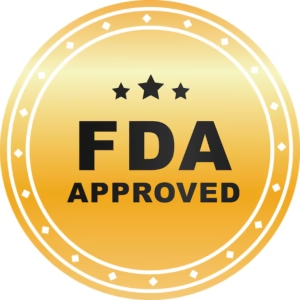
- Avoid Drug Claims
Statements like “reduces wrinkles” or “treats eczema” classify a product as a drug, requiring FDA approval. Instead, use cosmetic claims like “moisturizes,” “enhances radiance,” or “improves skin texture” to stay compliant.
- Tamper-Evident Packaging
Over-the-counter (OTC) products, such as acne treatments, require tamper-evident packaging for safety. This includes features like shrink wraps, sealed caps, or breakable seals to prevent contamination.
- Organic and Natural Claims
Terms like “100% organic” can only be used if certified by the USDA under the National Organic Program. Making unverified organic or natural claims can result in FDA warnings and consumer distrust.
- Country of Origin
Imported cosmetic products must state the country of manufacture on their labels. For example, a product made in France should display “Made in France” clearly to comply with U.S. Customs regulations.
- Font and Contrast Rules
Text must contrast sharply with the background for easy readability (e.g., black text on a white label).
Avoid placing text over complex designs that make important product information hard to read.
- Expiration Dates
While the U.S. does not require expiration dates, the EU mandates the Period After Opening (PAO) symbol. For example, a “12M” symbol indicates the product is safe to use for 12 months after opening.
- Vegan and Cruelty-Free Claims
Claims such as “vegan” and “cruelty-free” must be truthful and verifiable. To ensure credibility, brands should obtain certifications from recognized organizations like Leaping Bunny or PETA-approved Vegan programs.
Skincare-infused makeup is revolutionizing the beauty industry, offering hybrid products that nourish while enhancing appearance. Learn more in Skincare-Infused Makeup Enhances Beauty.
Designing Compliant and Eye-Catching Cosmetic Packaging
Designing cosmetic packaging that meets FDA regulations while maintaining visual appeal is crucial for branding and compliance.
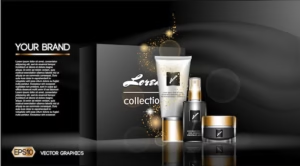
Material Safety: Protect Your Product and Consumers
- Use FDA-approved plastics, such as PET and HDPE, or glass containers to prevent chemical leaching.
- Avoid harmful materials like BPA, phthalates, and PVC, which can pose health risks to consumers.
Sustainability: Meet Eco-Conscious Demand
- Recyclable materials, such as glass, aluminum, or PCR (post-consumer recycled) plastic, are preferred.
- Refillable packaging options, like those from brands such as Kjaer Weis, help reduce waste significantly.
- Biodegradable alternatives, including mushroom-based packaging, are becoming popular in sustainable beauty.
Branding: Create a Memorable Unboxing Experience
- Color Psychology: Calming blues suit skincare, while bold reds convey energy and confidence for makeup.
- Typography: Sans-serif fonts, such as Helvetica, provide a modern and clean look that enhances readability.
- Texture: Matte finishes and embossed logos add a touch of luxury to premium beauty products.
User Experience (UX) Design
- Functional packaging: Use pumps for serums, droppers for oils, and spray nozzles for lightweight mists.
- Clear instructions: Multi-step products (e.g., peel-off masks) should include simple, easy-to-follow visuals.
5 Costly Labeling Mistakes (And How to Avoid Them)
- Incomplete Ingredient Lists
Example: Forgetting to list “water” as “aqua” in INCI terms leads to non-compliance.
Fix: Always cross-check against your formulation’s official bill of materials to ensure accuracy.
- Misleading Claims
Example: Calling a product “chemical-free” is incorrect since all ingredients are chemicals.
Fix: Use precise terminology like “synthetic-free” or “paraben-free” for factual marketing.
- Illegible Fonts
Example: Using cursive script for critical information, making it hard to read.
Fix: Stick to bold, sans-serif fonts for ingredient lists, warnings, and essential product details.
- Ignoring International Markets
Example: Selling in the EU without PAO symbols or mandatory allergen labeling.
Fix: Research local laws using regulatory databases like CosIng (EU’s cosmetic database) before export.
- Outsourcing Without Oversight
Example: A third-party manufacturer mislabels net weight, leading to compliance issues.
Fix: Conduct thorough label audits before mass production to prevent costly recalls or regulatory fines.
For a detailed overview of FDA regulations on cosmetic labeling, visit the official FDA page: FDA Authority Over Cosmetics.
FAQs:
Q: Does the FDA approve cosmetics before they’re sold?
A: No. The FDA regulates labeling and safety but doesn’t pre-approve cosmetics.
Q: Can I sell lip balm as a cosmetic?
A: Yes, unless you make drug claims like “heals chapped lips.”
Q: Are “fragrance-free” and “unscented” the same?
A: No. “Fragrance-free” means no added scent, while “unscented” may use masking agents.
Q: How do I label sample-sized products?
A: Follow the same FDA rules—include all mandatory info in legible font sizes.
Q: What’s the penalty for non-compliant labels?
A: The FDA can issue warnings, seize products, or pursue legal action.
Future Trends in Cosmetic Packaging and Labeling
- Smart Labels: NFC tags for instant access to ingredient sourcing or tutorials.
- Minimalist Waste: Water-soluble packaging for sheet masks or single-use products.
- Inclusive Design: Braille labels for visually impaired customers.
As cosmetic trends evolve, hair care is also undergoing a transformation. Discover the latest innovations in hair care formulations in The Ultimate Guide to Hair Care Trends 2025.
Conclusion: Where Compliance Meets Creativity
Mastering cosmetics packaging and labeling is a blend of science and art. By prioritizing FDA guidelines, sustainable materials, and user-centric design, your products can captivate consumers while avoiding legal pitfalls. Always cross-check regulations, test prototypes, and stay updated on industry trends—because in beauty, every detail matters.
